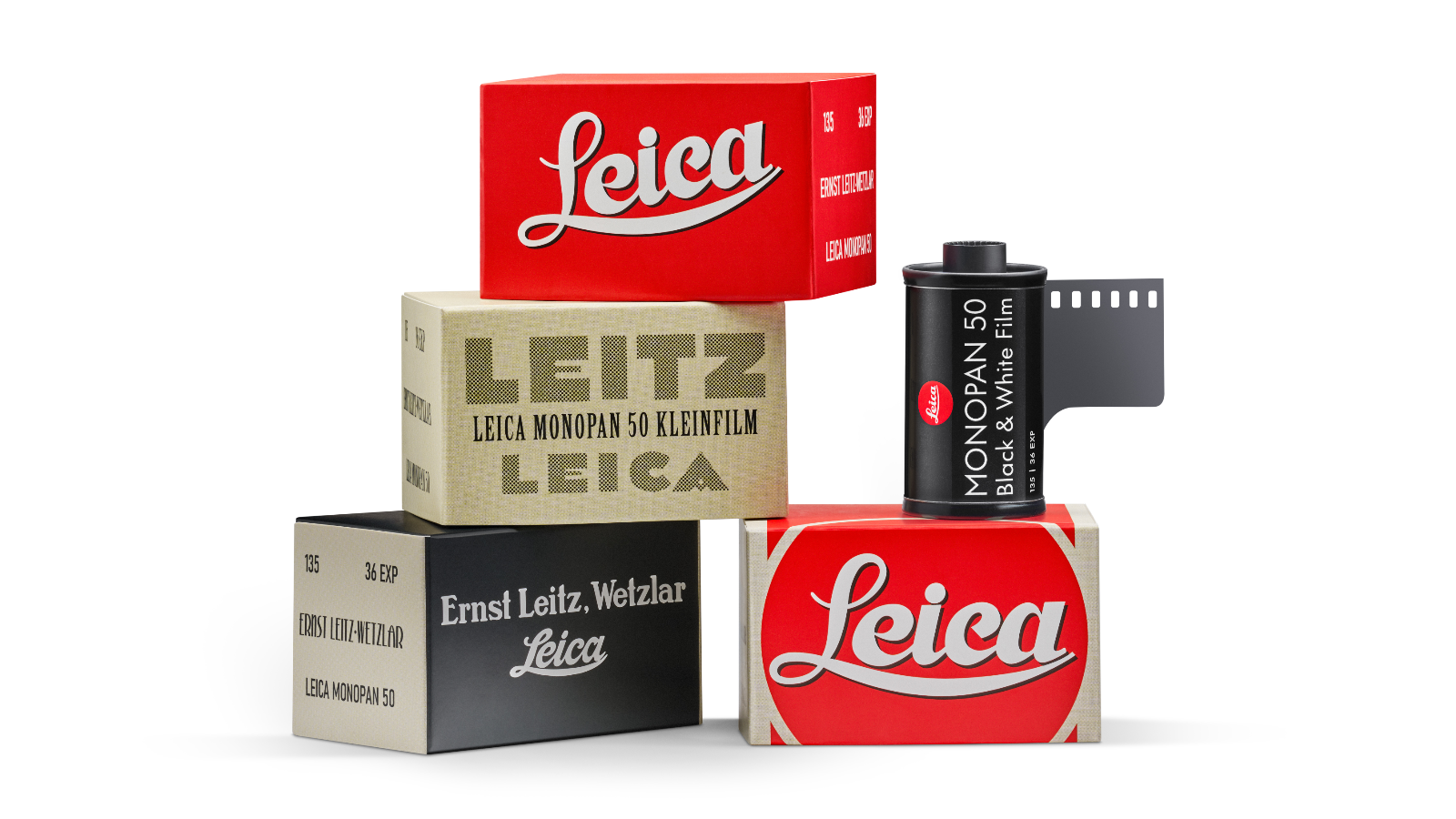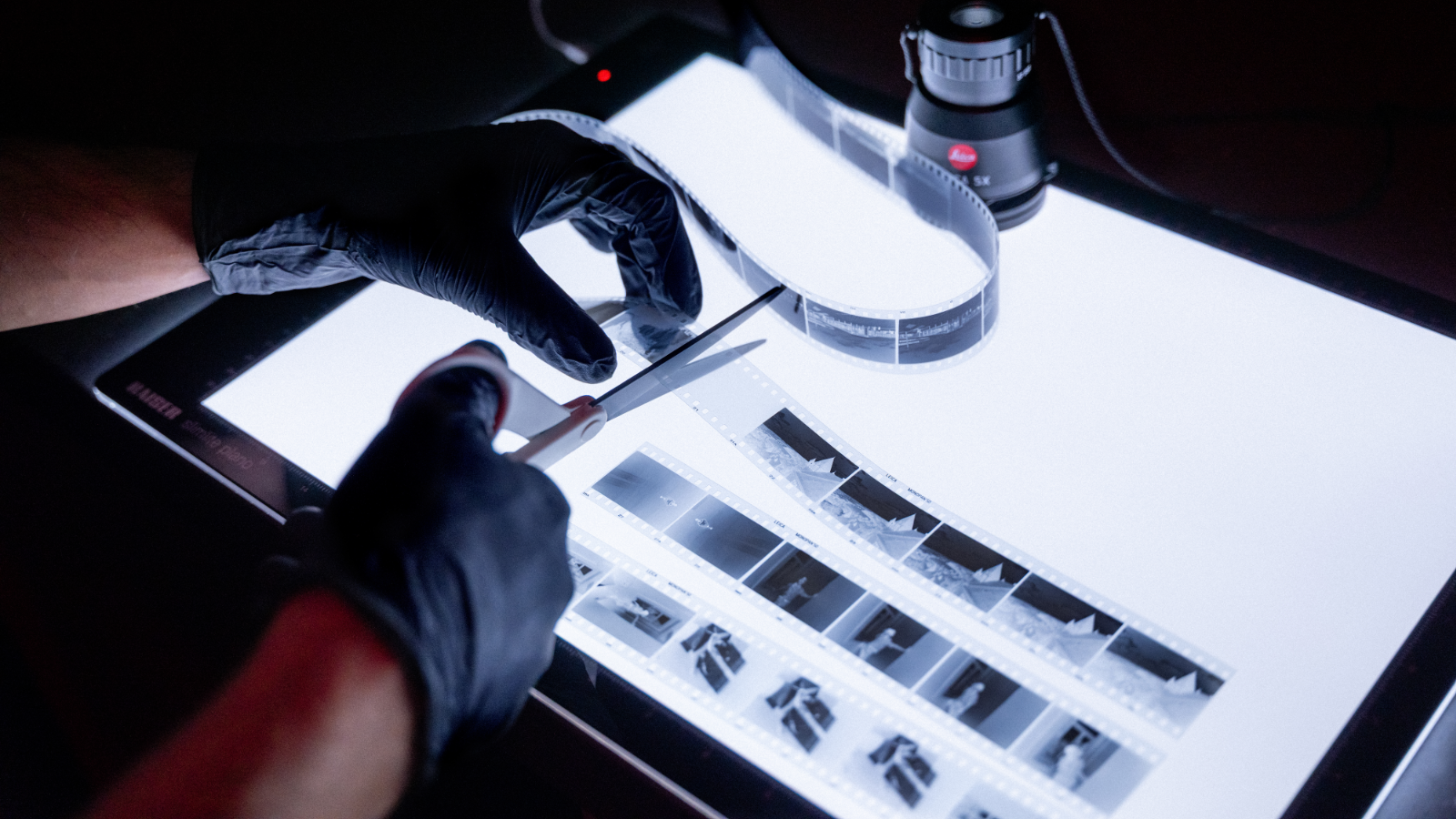After 100 years making cameras, Leica finally unveils its first-ever 35mm film – the surprisingly affordable Monopan 50

- Leica has announced a new 35mm film
- Monopan 50 is a fine-grain monochrome film
- Priced at $10 / £10 (around AU$20) for 36 exposures
Leica’s decided to celebrate its centenary with a surprise. To honor 100 years since the first production Leica camera, the brand with the red dot is dropping its first-ever 35mm film. A fine-grain monochrome roll with 36 exposures, it’s a niche product to launch in 2025. But the bigger bombshell is the price: the Monopan 50 costs just £10 (around US$13 / AU$20).
Leica isn’t a brand often associated with affordability. Its camera gear is known for quality craftsmanship that’s priced to match. When I tested the Leica Q3 43 last year, I was both awestruck by the build quality and terrified of damaging it. Because it costs $6,295 / £5,900 / AU$11,890. Leica is and always has been an unapologetically premium brand.
For most people, the prospect of buying or shooting with anything Leica sits somewhere between bucket list and lottery win territory. Until now, the most affordable way to shoot Leica has been the D-Lux 8 – a premium compact with a Micro Four Thirds sensor, which you can buy today for $1,595 / £1,450 / AU$2,790. Or cross all your fingers and toes in the hope of finding a secondhand analog Leica bargain.
The Monopan 50 changes that. Granted, it’s a 35mm film, not a camera. But it also feels like the first Leica product that’s accessible enough for stills photographers to use on a daily basis.
Leica for all
The Monopan 50 lands 100 years after the Leica I, the camera that effectively invented 35mm photography as we know it. Unlike most Leica releases, the new film feels like something to be used, not collected.
That’s not to say it isn’t special. The Monopan 50 is a fine-grain monochrome film made for black-and-white enthusiasts. With a resolution of up to 280 line pairs per millimetre, it promises gallery-grade detail. Its ISO rating of just 50 makes it a low-sensitivity film, inspired by the the original rolls around when the Leica I launched. In that sense, it’s as Leica as it gets. But crucially, it’s not outrageously expensive. In fact, quite the opposite.
Even for someone like me who doesn’t regularly shoot film, that’s a compelling proposition. It’s even more appealing for those who do, of which are there more and more.
Sign up for breaking news, reviews, opinion, top tech deals, and more.
Film photography isn’t just back: it’s quietly booming. Prices for vintage cameras have surged and new analog releases are arriving in greater numbers. Fujifilm is rumored to be resurrecting color stocks, Kodak is upgrading its factories to meet demand and Pentax dropped its new half-frame film camera last year. All of which speaks of a new generation rediscovering film.
It’s into this analog revival that Leica steps. The company still produces three fully mechanical 35mm film cameras, the M-A, the MP and the re-released M6. Equipped with high-quality optics and designed for a deliberate approach, all three are expensive models which cater to purists.
In that sense, the Monopan 50 is a natural companion. Feeding those cameras with a fine-grain black-and-white film will yield gorgeous results, while leaning into the slower, almost meditative experience of shooting with a 35mm rangefinder camera.
But the wider appeal of Monopan 50 film will lie in the fact that it’s democratic. With roll prices for standard emulsions creeping past £10 a pop, a tenner for 36 exposures of premium monochrome film feels like a bit of a steal. That it comes from Leica only sweetens the deal.

Next to the metal-bodied cameras that made its name, there’s something refreshingly humble about the most attainable Leica product in recent memory being a roll of plastic-coated acetate. But it also makes sense. As film becomes more mainstream again, brands are waking up to the fact that the audience has shifted.
It’s no longer just enthusiasts developing Ilford rolls in a home darkroom. It’s Gen Z photographers looking for slower, more tactile ways to create. And if they’re going to spend their cash on film, why not give them a reason to spend it on Leica?
Yes, the real cost of shooting Leica body and glass is in the thousands. But Monopan 50 at least opens the door. More than a nod to Leica’s past, it might be a sign of a different future for the brand, where more people are able to handle and shoot something with the Leica name on it.
Obviously, Leica would love you to pair Monopan 50 with an M-A or an MP. Maybe a vintage M6. But even with a Nikon F, or one of the best second-hand film cameras, its potential for fine detail and tonality is exciting.
Either way, I’m intrigued. Low-ISO film isn’t always easy to shoot, especially in the UK, where overcast conditions are the default. But the Monopan 50 feels like a film worth trying. Not just for what it can do, but for what it represents: Leica, leaning back towards the medium it helped to define a century ago, in a way that’s unexpectedly accessible.
So I didn’t expected to be buying Leica stock this year. But now I’m planning to.
You might also like...

For more than a decade, Chris has been finding and featuring the best kit you can carry. When he's not writing about his favourite things for Stuff, you'll find Chris field-testing the latest gear for TechRadar. From cameras to classic cars, he appreciates anything that gets better with age.
You must confirm your public display name before commenting
Please logout and then login again, you will then be prompted to enter your display name.